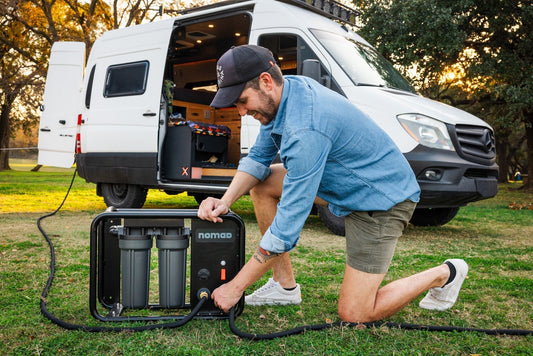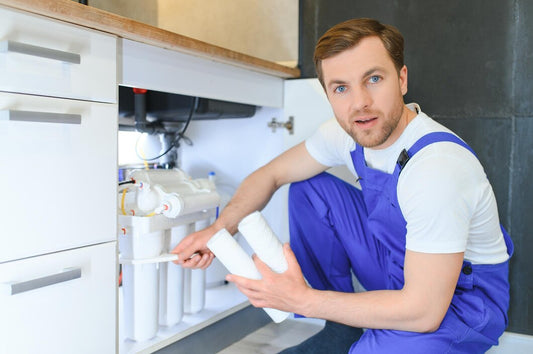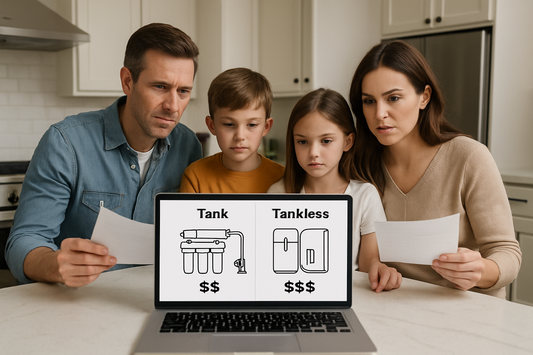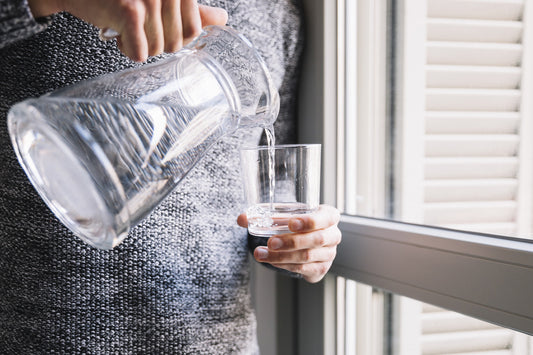You're filling up your favorite water bottle before heading out for a weekend camping trip. The water looks crystal clear, tastes fine, but what you can't see might surprise you. Even treated municipal water can contain over 300 different contaminants – from chlorine byproducts to microscopic particles that slip through aging infrastructure.
That's where the fascinating world of water filtration comes in. But how do water filters work exactly? The answer lies in a brilliant combination of physics, chemistry, and engineering that's been perfected over decades.
The Science Behind Clean Water: How Water Filtration Actually Works
How does water filtration work? It's not magic – it's science. Water filters use three fundamental processes to transform questionable water into the clean, safe liquid your family deserves.
Physical Filtration: Nature's Bouncer System
Think of physical filtration as nature's ultimate bouncer. Just like a bouncer at a club checks IDs and decides who gets in, physical filters have tiny pores that act as gatekeepers. Contaminants larger than these pores simply can't pass through.
Ceramic filters are masters of this technique. Made from diatomaceous earth, these filters contain millions of microscopic pores – each one smaller than harmful bacteria like E. coli. When water passes through, sediment, rust particles, and bacteria get trapped while clean water flows freely to your glass.
Chemical Adsorption: The Molecular Magnet
Here's where things get really interesting. Activated carbon doesn't just block contaminants – it attracts them like a powerful magnet attracts metal shavings.
Activated carbon starts as regular carbon (often coconut shells or coal) that's been "activated" through extreme heat. This process creates millions of tiny cavities and increases the surface area dramatically. To put this in perspective, just one gram of activated carbon has the same surface area as a football field!
These cavities create an electrical charge that attracts organic compounds, chlorine, and volatile organic compounds (VOCs). It's like having millions of tiny vacuum cleaners working at the molecular level, pulling contaminants out of your water and holding them tight.
Ion Exchange: The Ultimate Switcharoo
Ion exchange is perhaps the cleverest filtration method. Imagine if you could swap out harmful ions in your water for harmless ones – that's exactly what ion exchange resins do.
These special polymers are loaded with sodium or hydrogen ions. When hard water minerals like calcium and magnesium pass through, the resin releases harmless sodium ions and captures the troublesome minerals. It's like a molecular trading post where bad ions get swapped for good ones.
This process is especially effective for removing heavy metals like lead and copper, making it a game-changer for families concerned about pipe contamination.

Image by wertinio
Water Filtration Explained: Different Systems for Different Problems
Understanding how water filters work is just the beginning. Different contamination problems require different solutions, and that's where various filtration systems shine.
Pitcher Filters: Convenience Meets Chemistry
Those popular pitcher filters sitting on kitchen counters across America aren't just pretty – they're scientifically designed problem-solvers. Most combine activated carbon with ion exchange resins to tackle the most common water complaints: chlorine taste, odor, and light mineral content.
While they're perfect for improving taste and removing basic contaminants, pitcher filters work best for already-safe municipal water that just needs a taste upgrade.
Under-Sink Systems: The Powerhouse Solution
When you need serious filtration power, under-sink systems deliver. These multi-stage powerhouses typically combine several filtration methods in sequence, creating what engineers call a "treatment train."
Water first passes through sediment filters to remove larger particles, then through activated carbon stages for chemical removal, and finally through specialized media for targeted contaminants. Some premium systems even include UV sterilization or reverse osmosis membranes for ultimate protection.
Whole House Systems: Total Home Protection
Do water filtration systems work for your entire home? Absolutely. Whole house filters install at your main water line, treating every drop that enters your home.
These systems excel at removing sediment, chlorine, and other contaminants that can damage appliances, affect skin and hair, and impact the taste of water throughout your home. They're particularly valuable for families with sensitive skin or those living in areas with heavily chlorinated municipal water.

Image by atlascompany
The Real-World Impact: What Science Means for Your Health
Water filter explained in simple terms means this: these systems don't just improve taste – they provide measurable health benefits. Scientific studies show properly maintained water filters can reduce:
- Chlorine and its byproducts by up to 99%
- Lead contamination by 95% or more
- Organic chemicals and pesticides significantly
- Bacteria and parasites in many cases
But here's the crucial part: no single filter removes everything. That's why understanding your specific water quality concerns is essential for choosing the right technology.
Choosing Your Filtration Solution: Matching Science to Your Needs
The beauty of modern water filtration lies in having options. Whether you're dealing with chlorine taste in city water, sediment from well water, or specific contaminants like lead, there's a scientifically proven solution.
For families prioritizing convenience and basic taste improvement, advanced pitcher filtration systems offer laboratory-tested performance in a user-friendly package.
Those seeking comprehensive home protection should explore whole house filtration solutions that address water quality at every tap, shower, and appliance.
Maintaining the Science: Keeping Your Filter Effective
Even the most advanced filtration technology needs maintenance to work effectively. Filter media gradually becomes saturated with contaminants – it's actually a sign the system is working! Regular replacement ensures your filter continues performing at peak efficiency.
Most carbon filters need replacement every 2-6 months depending on usage and water quality. Ceramic filters can often be cleaned and reused multiple times before replacement. Always follow manufacturer guidelines for optimal performance.
The Bottom Line: Science You Can Trust
Understanding how water filters work empowers you to make informed decisions about your family's water quality. These aren't just gadgets – they're scientifically engineered solutions to real-world problems.
Whether you choose a simple pitcher filter or a comprehensive whole house system, you're investing in proven technology that's been refined through decades of research and real-world testing.
The next time you fill a glass with filtered water, remember: you're witnessing physics, chemistry, and engineering working together to protect what matters most – your family's health.

Image by hryshchyshen
Frequently Asked Questions
How long do water filters really last?
Filter lifespan depends on usage and water quality, but most carbon filters last 2-6 months while ceramic filters can last 6-12 months with proper cleaning.
Can water filters remove all bacteria and viruses?
Standard carbon and ceramic filters remove many bacteria but not all viruses. For complete microbial protection, consider UV sterilization or boiling.
Do more expensive filters work better?
Not always. The best filter matches your specific water quality needs. Sometimes a $30 pitcher filter outperforms a $300 system for your particular situation.
How can I tell if my filter is working properly?
Regular water testing, monitoring flow rate changes, and following replacement schedules are the best indicators of filter performance.






